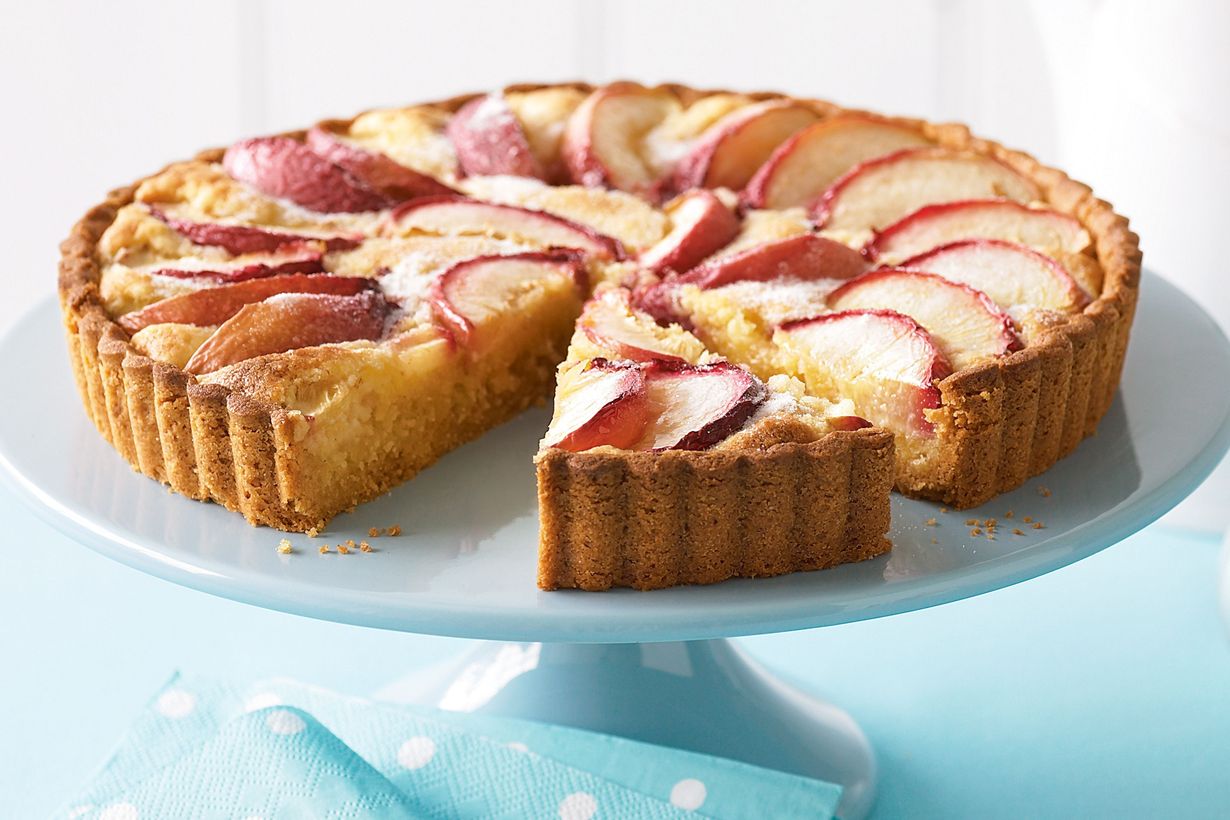
Frangipane is a delicious almond-flavored filling used in various pastries and desserts. Ever wondered what makes this sweet treat so special? Frangipane has a rich history and unique characteristics that set it apart from other fillings. Originating in France, it has become a staple in many European desserts, especially tarts. Made primarily from almonds, butter, sugar, and eggs, frangipane offers a creamy texture and nutty flavor that pairs perfectly with fruits like pears, apples, and cherries. Whether you're a seasoned baker or just curious about this delightful filling, these 32 facts will give you a deeper appreciation for frangipane and its versatile uses in the culinary world.
What is Frangipane?
Frangipane is a sweet almond-flavored filling used in various pastries and desserts. Its creamy texture and rich taste make it a favorite in many kitchens around the world. Here are some intriguing facts about this delicious treat.
- Frangipane is traditionally made from ground almonds, butter, sugar, and eggs.
- The name "Frangipane" is believed to come from an Italian nobleman, Marquis Muzio Frangipani, who invented a bitter almond-scented perfume.
- It is often used in tarts, such as the famous French Galette des Rois.
- Frangipane can be flavored with other ingredients like vanilla, rum, or citrus zest.
- The filling is sometimes confused with marzipan, but they are quite different; marzipan is a sweet almond paste, while frangipane is a creamy filling.
Historical Background of Frangipane
Understanding the history of frangipane can give us a deeper appreciation for this delightful filling. Its origins and evolution are as rich as its flavor.
- Frangipane dates back to the 16th century.
- It was originally used in Italian and French pastries.
- The recipe has evolved over the centuries, with variations appearing in different cultures.
- In medieval times, frangipane was considered a luxurious ingredient due to the high cost of almonds.
- The filling became popular in England during the Victorian era.
How Frangipane is Made
Making frangipane involves a few simple steps, but the result is a complex and delicious filling. Here’s a closer look at the process.
- Start by creaming together butter and sugar until light and fluffy.
- Add ground almonds to the mixture.
- Incorporate eggs one at a time, ensuring each is fully mixed before adding the next.
- Some recipes call for a small amount of flour to stabilize the mixture.
- The final product should be smooth and spreadable.
Uses of Frangipane in Baking
Frangipane is incredibly versatile and can be used in a variety of baked goods. Its rich flavor complements many types of pastries.
- It is a key ingredient in the classic French Galette des Rois.
- Frangipane is often used in fruit tarts, pairing well with apples, pears, and cherries.
- It can be used as a filling for croissants and other pastries.
- Some bakers use frangipane in cakes for added moisture and flavor.
- It is also popular in Danish pastries.
Variations of Frangipane
While the traditional recipe is beloved, there are many variations of frangipane that offer unique twists on the classic filling.
- Chocolate frangipane incorporates cocoa powder or melted chocolate.
- Citrus frangipane includes zest from lemons, oranges, or limes.
- Pistachio frangipane uses ground pistachios instead of almonds.
- Coconut frangipane adds shredded coconut for a tropical flavor.
- Some recipes call for a splash of liqueur, such as Amaretto or Grand Marnier.
Fun Facts About Frangipane
Here are some fun and lesser-known facts about frangipane that might surprise you.
- Frangipane is gluten-free if made without added flour.
- It can be stored in the refrigerator for up to a week.
- Frangipane can be frozen for up to three months, making it a convenient make-ahead option.
- The filling is often used in traditional Christmas desserts in Europe.
- Some chefs use frangipane as a base for ice cream or custard.
Frangipane in Popular Culture
Frangipane has made its mark not just in kitchens but also in popular culture. Its presence in literature and media highlights its enduring appeal.
- Frangipane is mentioned in several classic French novels.
- It has been featured on popular cooking shows and in culinary magazines, showcasing its versatility and timelessness.
Frangipane: A Sweet Ending
Frangipane, with its rich history and versatile uses, is more than just a tasty filling. From its origins in Italy to its popularity in French pastries, this almond-based delight has captured hearts worldwide. Whether you're baking a classic tart or experimenting with new recipes, frangipane adds a unique flavor and texture that's hard to beat.
It's fascinating how a simple mixture of almonds, butter, sugar, and eggs can transform into something so special. Next time you enjoy a slice of frangipane tart, remember the centuries of tradition and craftsmanship behind it.
So, whether you're a seasoned baker or just starting, give frangipane a try. You might find a new favorite ingredient that brings a touch of elegance to your desserts. Happy baking!
Was this page helpful?
Our commitment to delivering trustworthy and engaging content is at the heart of what we do. Each fact on our site is contributed by real users like you, bringing a wealth of diverse insights and information. To ensure the highest standards of accuracy and reliability, our dedicated editors meticulously review each submission. This process guarantees that the facts we share are not only fascinating but also credible. Trust in our commitment to quality and authenticity as you explore and learn with us.
